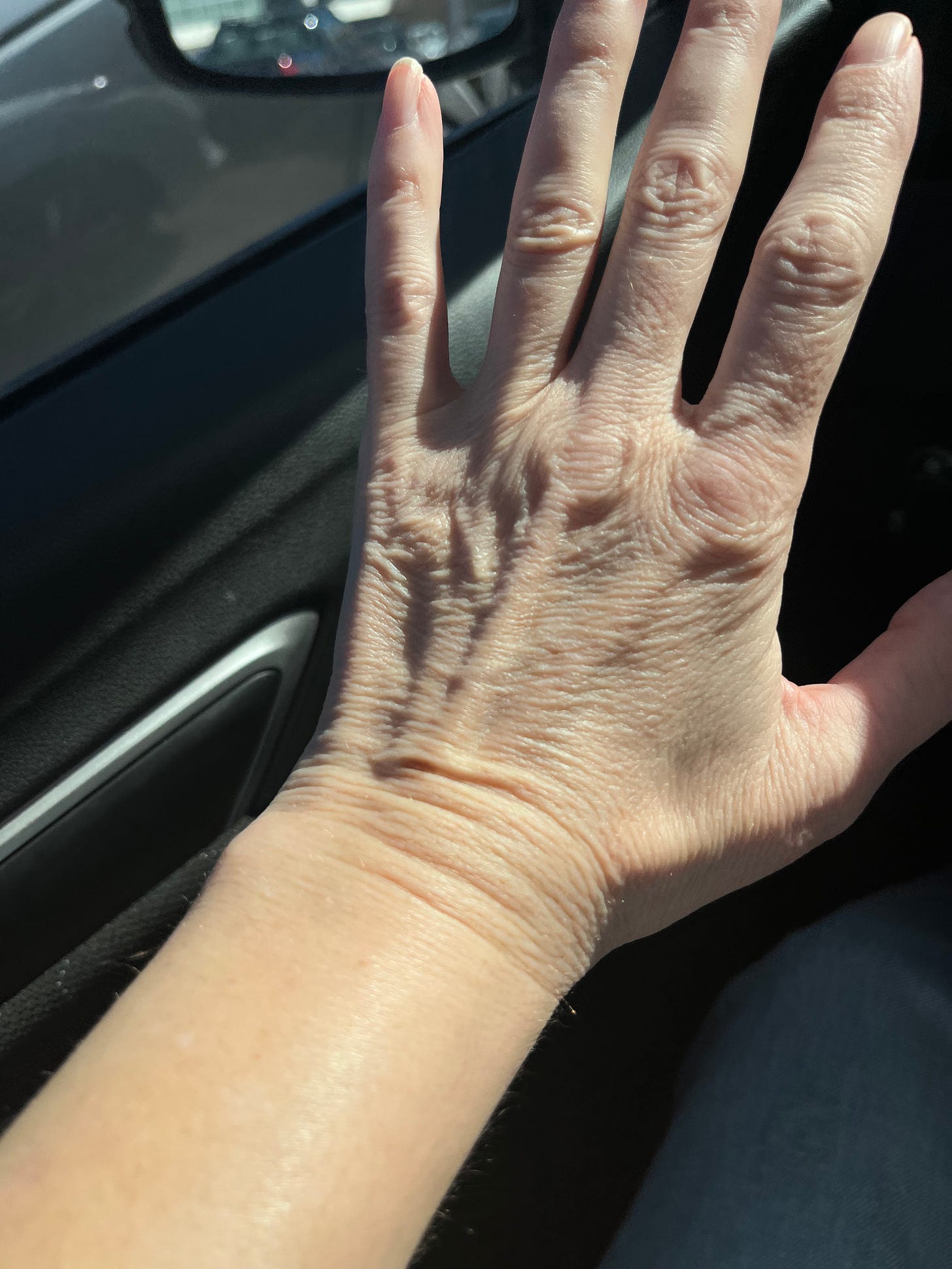Welcome to Field Notes. Here, you’ll find short reflections and questions to support your intentional life. Please comment to share your experiences of living with attention.
And an addendum. You will notice that there is only one Field Note this week. This one got out of hand and became less of a note and more of newsletter. I conceded and let it be what it wanted. Enjoy!
Children don’t often distinguish the animate from the so called inanimate. As a child, I used to carry around a ketchup bottle wrapped in a blanket. I told everyone that the bottle (and the ketchup in it ) was my baby. I also held long conversations with windows and slept with my shoes. The toes had to be placed on the pillow next to me with only the ankle end covered by a blanket; otherwise, the shoes would not be able to breathe. My mother likes to tell the story of her much older brother punching her pillow, while she cried because he was hurting it. The story always makes me incredibly sad, for my mother and also, for the pillow.
To a large extent (one larger than I’d like admit) I’ve carried this affinity for animation into adulthood. I have a lot of trouble, for example, parting with particular pieces of furniture because the act feels like sending a long time inhabitant of my house off to an unknown future. Cars are particularly difficult to disentangle from my emotions. In our family, we drive cars until, literally, no one can drive them anymore, unless they are willing to replace the engine. I cried when we donated our 2002 Honda Odyssey with 270,000 miles on it to the Salvation Army. I cried for the memories of all three children growing up in that vehicle, for all the moves and trips we made in it, but also for the vehicle itself. I was witnessing a death.
I used to be rather embarrassed of my childish propensity to see all things as myself, of my over-active imagination. But now, I’m more curious than critical. Interdependence, “interbeing,” as Thich Nhat Hanh labelled it, is a core Buddhist teaching. Every “thing,” people, plants, animals, minerals, even (perhaps, especially) plastic, is deeply entwined with every other thing. We truly cannot separate the living from the dead. While I don’t want to form a codependent bond with my dining room table, I do want to return to and affirm that childlike way of being, where I am not the world, only of it, where each thing I encounter has a story and a resonance that may be different, but no less important, than mine.
Simple awareness of this desire goes a long way in helping me to notice and find delight in the non-human lives that share my own, the birds that frequent my yard, the windows in my home that let in so much beautiful and necessary light, the fences that keep the rabbits from eating my garden, and yes, those rabbits. As a result, I can live a less me-centric life while also having a better sense of where that life belongs, and how I can use it best during my time here.
What is your experience of the extra-human world? How do you live intentionally in and with it? How has this changed since childhood?




I love what you say about feeling your toes needed to be uncovered at night so they could breathe!
As a young child, I remember lying in bed at night and thinking of myself in our planet, and our planet in the solar system, and the solar system in our galaxy, and always more and more, and getting really freaked out, afraid or awed, I didn't have words for this back then for this vastness and the hollow and pull at the pit of my stomach it produced...
I've been reading Alan Watts lately and reflecting a lot on his argument that the idea of separateness between things- that the world is made up of lots of little bits - is a myth, that everything is part of the same whole even though we find it hard to see it that way in the Western world. I think what you describe seems like a great example of how to put that philosophy into practice, ie. living with a deeply held respect for things that aren't 'you' but also in some sense are. I love it when things I read dovetail like this - thank you!